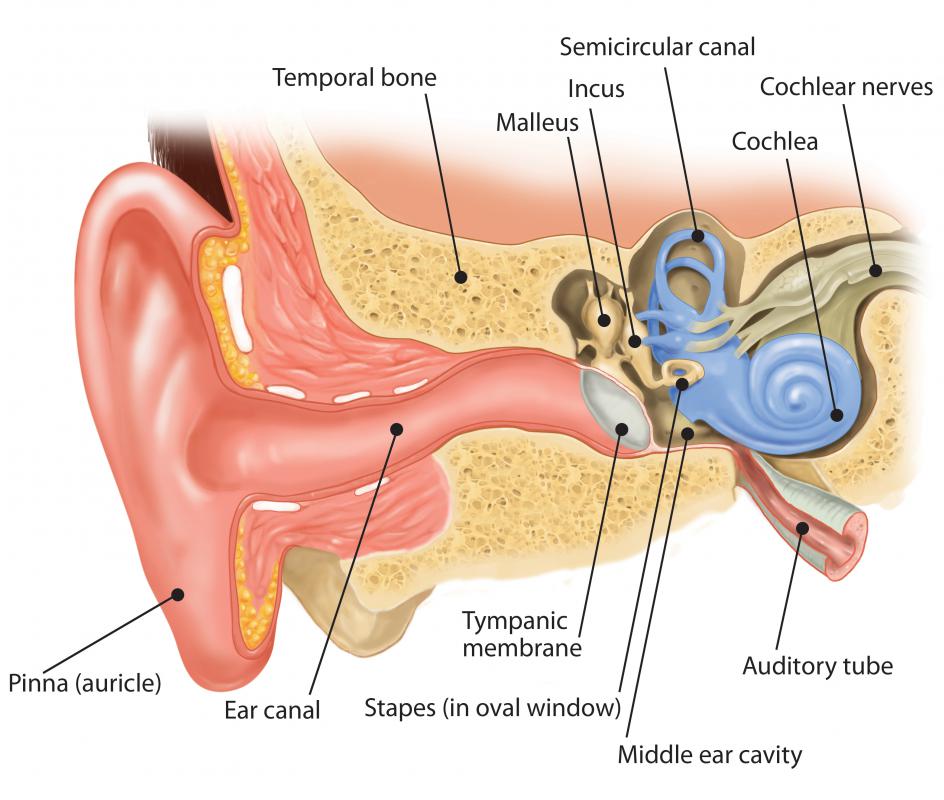At WiseGEEK, we're committed to delivering accurate, trustworthy information. Our expert-authored content is rigorously fact-checked and sourced from credible authorities. Discover how we uphold the highest standards in providing you with reliable knowledge.
What is the Rinne Test?
The Rinne test is a diagnostic procedure and screening tool used to help pinpoint the cause of hearing loss. It does so by comparing the patient's perception of sounds that are transmitted through the air as opposed to sounds transmitted via bone conduction through the mastoid process. In the field of otology, doctors and audiologists use the Rinne test to help detect or rule out conductive hearing loss.
In conducting the Rinne test, a tuning fork vibrating at either 256 Hz or 512 Hz is first placed on the patient's mastoid process, a part of the temporal bone. When the patient reports that he or she no longer can hear the sound, the tuning fork is then immediately repositioned next to the ear's opening. If the patient continues to perceive the sound, this aids in ruling out the presence of conductive hearing loss.

The physiology behind the Rinne test is based on the two primary ways in which people perceive sound. When sound reaches the patient via the air, it is conducted by the pinna, eardrum, and ossicles, which direct the sound to the inner ear while also amplifying it. Also conducted by the bones of the head, sound can bypass these ear mechanisms, transmitting directly to the inner ear. Sound conducted by the bones of the head have a lower volume than those transmitted through the air.

If the ear's function is normal, a Rinne test will indicate that air conduction produces better sound than bone conduction. This is called a "positive Rinne." With conductive hearing loss, however, bone conduction will produce better sound, called a "negative Rinne."
When a Rinne test is performed, a Weber test should also be conducted. The Weber tests helps to detect the presence of sensorineural hearing loss caused by dysfunction of the vestibulocochlear nerve, inner ear, or the parts of the brain that process sound. In the Weber test, a tuning fork is placed at the midline point of the forehead.

The most common cause of sensorineural hearing loss are abnormalities found in the hair cells in the cochlea. These abnormalities can be caused by both external and internal factors. Traumatic noise, such as listening to headphones at a very high volume, is an example of an external factor. An example of an internal factor would be a genetic predisposition to deafness.

If sensorineural hearing loss is present, both bone conduction and air conduction are equally reduced while maintaining the relative difference between bone- and air-conducted sound. This result is also referred to as a "positive Rinne." There is cause for concern, however, as a "false negative Rinne" may result when sensorineural hearing loss is involved.

Both the Rinne and Weber tests are intended to provide a means of quickly screening patients complaining of hearing loss. Neither test is a substitute for more extensive and sophisticated audiometric testing. Patients should consult their healthcare professional for the best options.
AS FEATURED ON:
AS FEATURED ON:















Discuss this Article
Post your comments